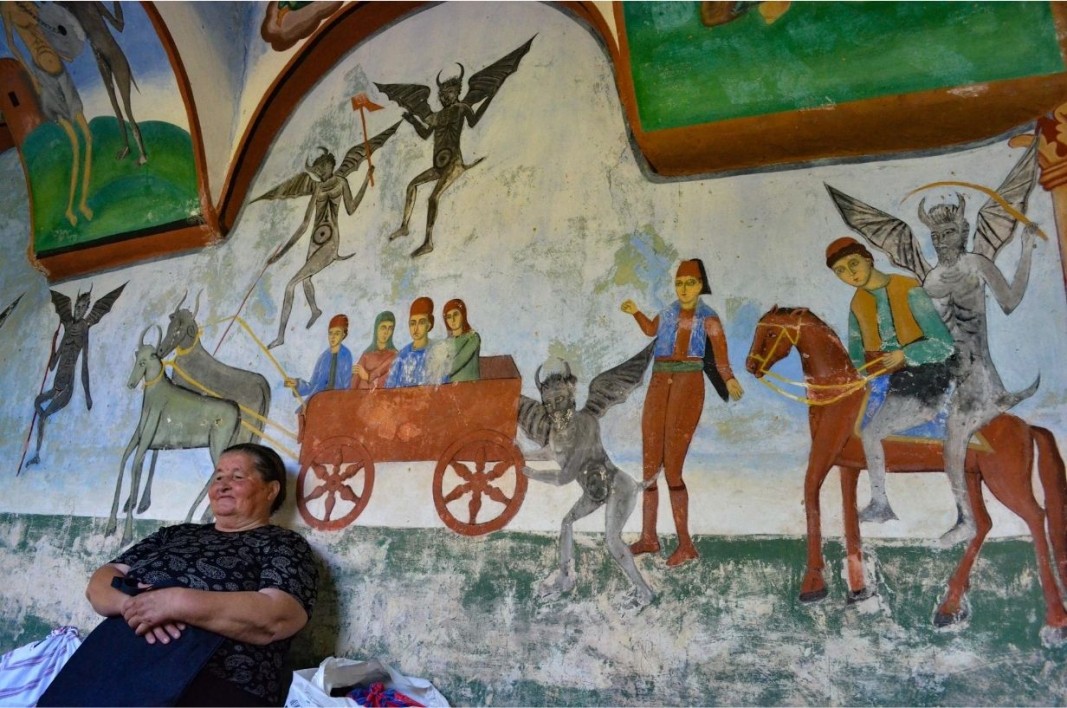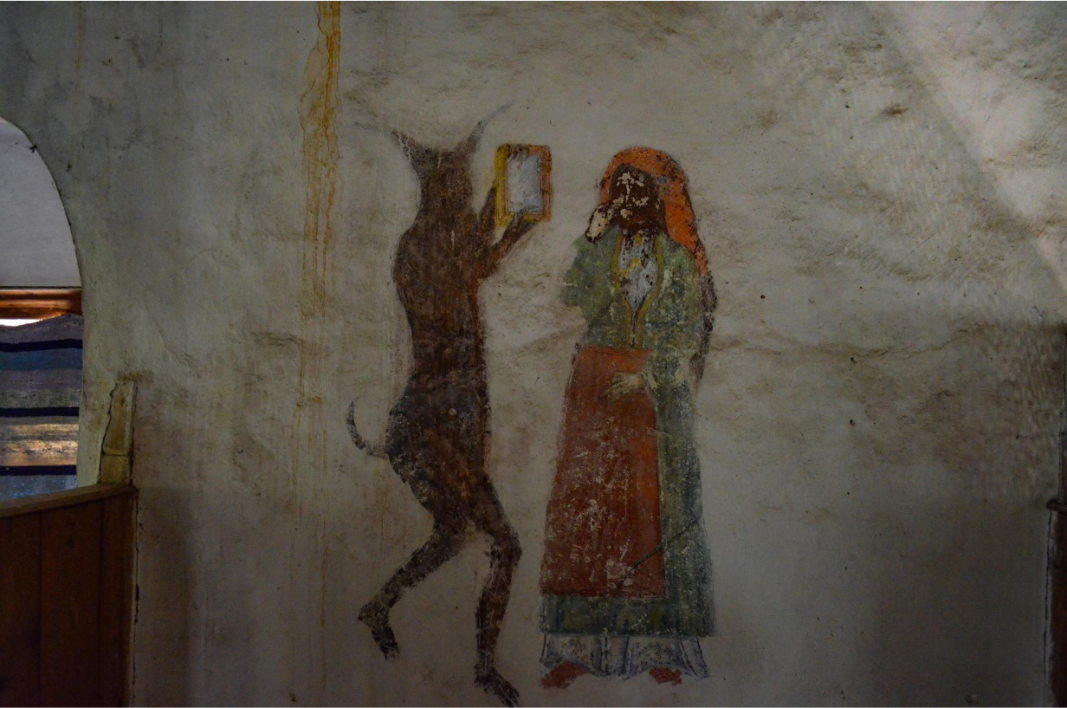Ograzhden Mountain rises in the southwestern part of Bulgaria, spilling over onto the territory of North Macedonia where it reaches its highest point. For decades access to this part of the country was barred because it was a border area. Now, its old neighbourhoods with their stone churches and delightful scenery are open to the public.
Gega village and Churilovo monastery
One place well worth visiting is the village of Gega. Located some 10 kms. from the border with North Macedonia, Gega has a lot to offer visitors. In its environs, perched on a small hill rises the St. George or Churilovo monastery, also known as the “Devils monastery”. But why is it called Churilovo monastery? Because it is located between two villages – Gega and Churilovo. And why devils? Because the narthex of its church is covered in bright paintings depicting scenes from the Last Judgement. The style of the paintings is typical of the period of the Bulgarian National Revival, but the name of the artist is unknown. The idea of the paintings is to edify people entering the church.

Stories of devils and sinners
The wall paintings are an illustration of the different ways humans can fall into sin and break the 10 commandments. As well as of the punishments and torture the devil will inflict upon them if they have sinned. For example – the devil ties a millstone around the neck of the miller who lies as a constant reminder of his sin. Unrepentant sinners are wrapped in chains and thrown into the jaws of a monster dragon. There is picture of the prophet Isiah, who spoke ill of the authorities – he was cut into pieces with a saw.

The stone church and the monastery school
The church of Churilovo monastery is a solid building made of stone. It has three naves, delicate woodcarvings and pillars in vivid colours. On the second floor is the women’s section. Special banisters prevented the girls from peeking at the men below. The idea – to avoid any temptation in the temple of God. Here you will find a faded wall painting – a young woman looking at herself in the mirror, and the mirror is held by the devil himself. Once, there was an inscription warning that: A lass who preens herself has the devil holding up her mirror.

What we know about the monastery’s past
Little is known about the monastery’s history. Its construction is thought to have been started in 1848 on the spot where there once existed a very old Christian Orthodox church. There was a monastery school for the children from the nearby villages. And one interesting detail – the first teacher at the school was Stoyan Gulubov. The village paid the cost of his education in faraway Constantinople, with the idea that he would convey the knowledge he gleaned there to the children of Gega. In our day the school has been renovated, along with the church and the beautiful bell tower rising up to the sky in immediate proximity. From the bell tower there is a fine view of Ograzhden Mountain and the peaks of Mount Belasitsa.
Photos: Veneta Nikolova
Hisarya has become the first Bulgarian town to join the European Association of Historic Thermal Towns (EHTTA) , BTA reported. The mayor of the municipality, Iva Valcheva, announced the news before the 12th annual congress of the Bulgarian Union of..
A meeting was held between the Ministers of Tourism of Bulgaria and Montenegro, Miroslav Borshosh and Simonida Kordic, within the framework of the official visit of a Bulgarian government delegation to Montenegro. Among the main topics was the..
Bulgaria’s southern Black Sea coast continues to welcome hundreds of thousands of holidaymakers even after the peak of the tourist season. In early September, the resort towns still pulse with the rhythm of summer, and the Municipality of Tsarevo is..

+359 2 9336 661
